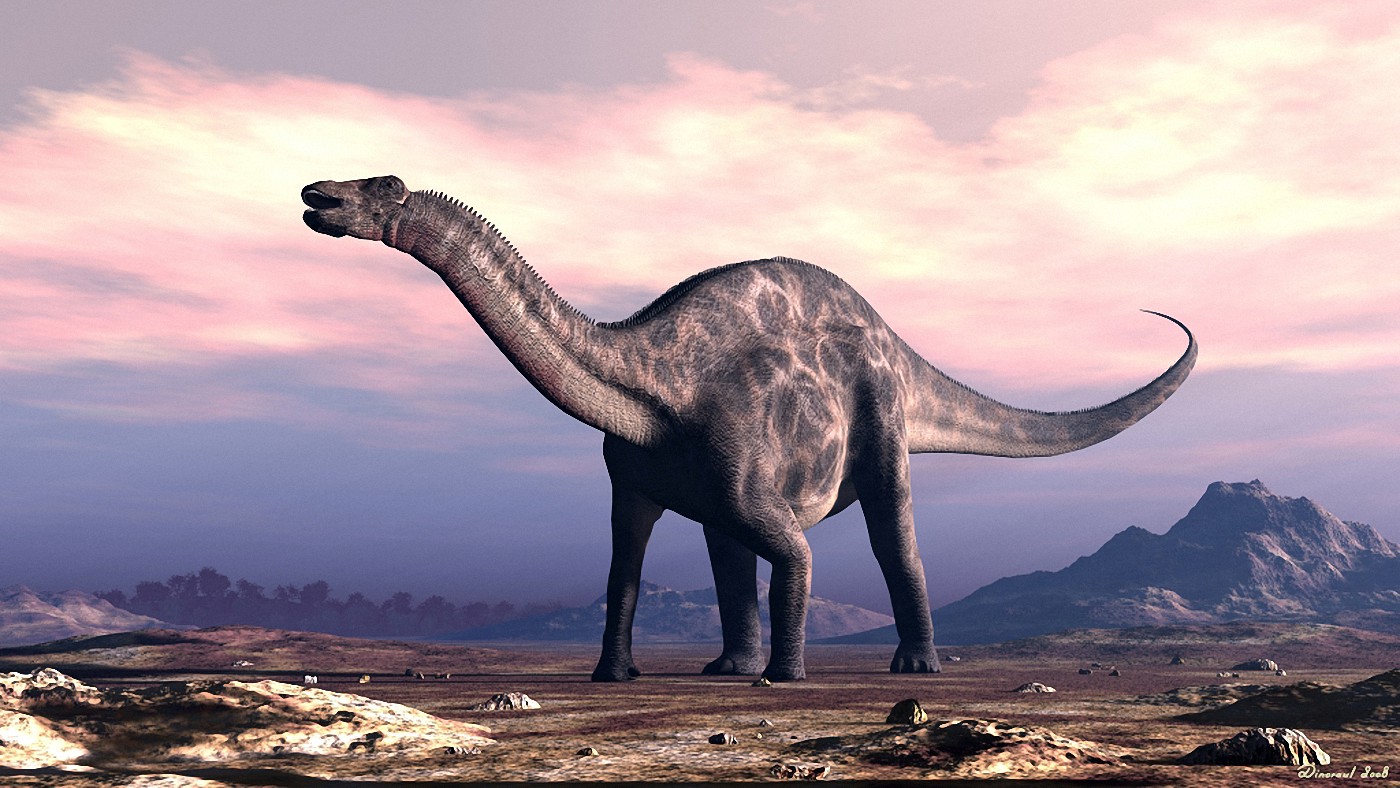
The Oldest Plant-Eating Dinosaur Has Been Found in India
The Thar Desert, a scorching region in western India’s Rajasthan state, holds an intriguing historical secret. Although it’s now known for its arid climate, during the Mesozoic Era, it was a tropical shoreline along the Tethys Ocean, teeming with dinosaurs and marine life.
A recent discovery in the Thar Desert has shed light on this ancient past. Fossil evidence, dating back 167 million years, has revealed a new species from the dinosaur group called dicraeosaurids.
These dinosaurs were known for their long necks and plant-based diets. This discovery, named Tharosaurus indicus, is not only the first of its kind found in India but also the oldest dicraeosaurid ever identified in the world’s fossil records.
The team of researchers, all from India, who uncovered this fossil named it after the Thar Desert and its country of origin. Their findings were published in the journal Scientific Reports, emphasizing the importance of studying fossils from the Indian subcontinent to enhance our understanding of Earth’s prehistory.
Dicraeosaurids belong to the larger group of diplodocoid sauropods, characterized by their elongated bodies and necks. These types of dinosaurs are commonly found in fossil beds from the Middle Jurassic to Early Cretaceous periods.
What sets dicraeosaurids apart are the spikes on the back of their necks. Previous discoveries of this group have been made in Africa, the Americas, and China, but this recent finding fills a gap in the fossil record by establishing their presence in India.
This discovery challenges earlier assumptions that India only housed the ancestors of diplodocoids. It highlights the dynamic nature of Earth’s prehistoric ecosystem and reinforces the significance of exploring diverse regions to uncover hidden insights into the history of life on our planet.
Dr. Sunil Bajpai and fellow researchers embarked on a quest to delve deeper into the past of the Thar Desert. In collaboration with the Geological Survey of India and the Indian Institute of Technology Roorkee (IIT Roorkee), they initiated a systematic exploration and excavation effort in the vicinity of Jaisalmer, a major city in the Thar Desert.
The goal was to uncover the hidden history of this region. Initial discoveries unveiled now-extinct hybodont sharks and marine bony fish, painting a vivid picture of the ancient marine environment. However, the real breakthrough came in 2019 when the excavation of dinosaur fossils commenced, leading to the groundbreaking discovery of Tharosaurus indicus.

This newly found dinosaur exhibited distinctive features, setting it apart from others in its group. The neck bones displayed elongated depressions on their sides, neural spines exhibited deep divisions that could resemble upward spikes on the neck, and the tail bones presented a heart-shaped front surface. These unique characteristics contribute to our understanding of the species and its ecological role.
The significance of this discovery extends beyond the individual dinosaur. When examined in the context of other primitive dinosaur findings like Barapasaurus and Kotasaurus from the Early Jurassic Kota Formation in central India, the existence of Tharosaurus lends strong support to the idea that present-day India played a pivotal role in the emergence and diversification of neosauropods. This group comprises long-necked vegetarian dinosaurs that evolved to become some of the largest land animals in history.
This conclusion gains additional support when considering the arrangement of continents during the Middle Jurassic period. The findings underscore how India’s geological history and unique environmental conditions contributed to the evolution and proliferation of these magnificent creatures.
The collaborative efforts of researchers, the unraveling of fossil secrets, and the reinterpretation of history enable us to piece together a more comprehensive narrative of Earth’s past, unveiling the role of India in the intricate tapestry of prehistoric life.
Dr. Sunil Bajpai’s work not only sheds light on the fascinating history of dinosaurs in India but also underscores the broader significance of the Indian landmass in the evolutionary history of various vertebrate groups.
Among the notable discoveries are fossils like Indohyus and Cambaytherium, pivotal in tracing the origins of whales and horses respectively. These discoveries contribute to a richer understanding of the origins and development of diverse animal lineages.
The prehistory of India remains a realm of exploration, as much of its fossil record is yet to be unearthed and studied. The significance of these findings goes beyond a mere curiosity. They provide essential insights into the evolutionary processes that have shaped the biodiversity of the subcontinent and how its paleogeography has evolved over time.
Andrej Čerňanský, a vertebrate paleontologist at Comenius University in Bratislava, Slovakia, highlights the importance of such discoveries in contributing to our understanding of the evolution of animals in India and the shifting geographical landscapes of the past. This knowledge not only enriches our scientific understanding but also enhances our appreciation of the intricate interplay between geological and biological phenomena.
Dr. Bajpai acknowledges the challenges in advancing the field of vertebrate paleontology in India, including limited access to fossil sites due to mining, dense forest cover, funding constraints, and limited job opportunities for paleontologists.
However, he remains optimistic about recent federal proposals aimed at protecting and conserving important fossil sites and geoheritage sites across the country. These initiatives hold the promise of creating a more conducive environment for the advancement of paleontological research in India, enabling scientists to unlock more secrets of the subcontinent’s ancient past.



